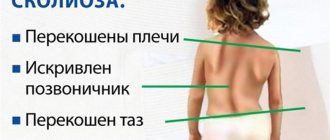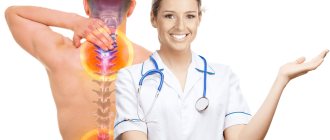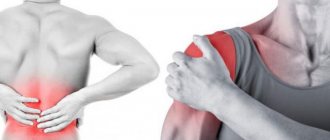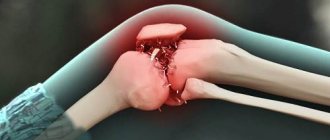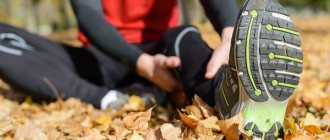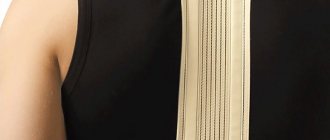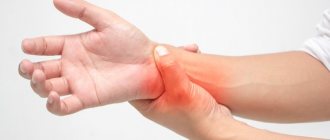Every parent should observe what kind of gait or body position their child has while sitting. One child holds his head straight, turns his shoulders, keeps them at the same level, tightens his stomach, his gait is light and free. Another child may lower his head and shoulders and bend his knees. In this case, posture is disrupted and the skeleton is formed incorrectly.
If you notice that your child has begun to show poor posture, you should consult a doctor. The First Children's Medical Center employs the best pediatric orthopedists in Saratov: here you can get qualified medical care!
What is posture
The concept of “posture” refers to the vertical position of the body, which is familiar to a person, in which skeletal balance and muscle balance are maintained. This is a reflection of the state of the musculoskeletal system. Posture problems are common among children and adolescents. Often, orthopedists make a diagnosis such as lordosis, scoliosis or kyphosis.
Postural disorders are rare in children who attend preschool institutions. Such violations are much more common among children of primary school age and among adolescents.
Consequences of poor posture
Improper posture has a negative impact on the entire body:
the functions of the respiratory system deteriorate;
microcirculation of blood in organs located in the chest deteriorates;
the quality of perception and memory of information decreases;
mental performance deteriorates because the body position is incorrect;
the function of the visual organs is impaired, ophthalmological diseases develop - myopia, farsightedness, astigmatism;
the functions of the central and peripheral nervous system deteriorate.
With poor posture, children also experience various psychological disorders. A closed character arises, irritability and capriciousness appear. Pain in the spine also occurs, especially after prolonged sitting or after performing physical activity.
How is posture formed?
The formation of posture occurs after a person is born. To ensure proper formation, you need to place the baby correctly in the crib, more often lay it on the tummy so that the muscles and spinal column develop and strengthen.
In newborns, the amount of cartilage tissue predominates, and the amount of bone tissue is less. Therefore, there is no need to sit the baby up ahead of time, you should not put him on his legs, since the muscles are not yet developed. The muscles must be formed and ready for stress.
As a child grows up, weakness in the muscles of the back, abdomen and hips can cause problems with posture. Also, incorrect posture develops as a result of incorrect position when sitting at a table, when sitting with your legs tucked under you.
Osteopathic treatment for postural disorders in children
Osteopathic treatment of postural disorders (deformations) is very effective for patients of all ages. Unlike traditional medicine, which often defines a disease as a set of its symptoms and offers symptomatic treatment, osteopathy focuses on finding the root cause of the disease. And as practice shows, this approach is more logical and effective.
Forming correct posture is an important aspect in the health of every person. According to osteopathy, the human body is a complex self-regulating system in which bones and muscles, joints and internal organs are closely interconnected. The equilibrium position of the skeleton and muscular frame is the key to proper symmetrical development, the general health of the child, and the proper functioning of his organs and systems. Even minor injuries and changes in the position of the skeletal bones lead to disruption of blood circulation and metabolism in the damaged area and the body as a whole, and deterioration of neural connections. It is with these “subtle matters” that the osteopath works. You cannot simply “straighten” a curved spine—the impact must be more subtle and targeted.
At the first stage of correcting violations of children's posture, the specialist determines its degree and looks for the root causes. Usually these are mechanical dysfunctions of the body, which cause external changes. If the child has pain, it must be relieved. Only in this case will the treatment be effective - the patient must be completely relaxed, and his body must be responsive to the specialist’s influence.
The osteopath acts on individual points of the body in order to restore blood circulation in them and relieve muscle spasms that interfere with this. Indeed, often the cause of “distortion” of the spine is increased muscle tension on one side of the body and/or hypotonicity on the other.
In parallel with working on posture, the specialist identifies other disorders caused by improper development and position of the skeleton. These may be dysfunctions of internal organs, neuralgic abnormalities. Thanks to this complex effect, the child’s body receives a powerful stimulus for self-regulation, which significantly speeds up the treatment process.
Children are very sensitive to osteopathic manual techniques, which allows for effective correction in the early stages. Usually changes and results become noticeable after the first session. Unlike exclusively massage and chiropractic treatments, the result of osteopathic treatment lasts for a long time.
A full course of correction of the child’s skeleton and muscular frame may take several months. Treatment is carried out in courses of 3-5 sessions with intervals between them of 2-4 weeks. This time is necessary for the child’s body to “learn” the changes made by the osteopath’s manual techniques and adapt to them. One session takes from 40 to 60 minutes, depending on the age of the child and the nature of the observed deviations. During the session, the osteopath uses the following techniques:
- Correction of dysfunction of the sacrum and bones in the iliac region. Microdisplacements of the pelvic bones are often one of the main causes of figure deformation. They are caused by both injuries and a sedentary lifestyle. Manual osteopathic techniques allow you to restore the correct position of bones and joints, normalize blood circulation in the pelvic area, which helps improve metabolism in the body;
- Restoring spinal mobility. Disturbances can be caused by injuries (including birth injuries), incorrect position and postures in infancy, and insufficient nutrition, which often causes damage to the intervertebral discs. Not having their own blood supply system, they receive nutrition from neighboring tissues. Therefore, blood stagnation and spasms in the back muscles are very dangerous, which prevent sufficient fluid and nutrients from reaching the muscles. Dehydration of the intervertebral discs leads to impaired mobility and spinal dysfunction. The influence of an osteopath can improve blood circulation and restore the structure of the intervertebral discs, thereby restoring mobility to the spine;
- Cranial impact. By influencing the areas of the skull and the cervical-occipital junction, the osteopath improves blood supply to the brain, which allows the micro-oscillations of the skull bones to be restored. Receiving enough oxygen and nutrients, the cerebral cortex actively works, restoring lost and creating new neural connections, including those responsible for the normal functioning of the spine, limbs, and joints;
- Muscle-energy techniques. By influencing the soft tissues of the body, including muscles, the osteopath increases their tone, relieves blocks and spasms. This allows you to get rid of blood stagnation in the muscles and normalize blood circulation in them. Unlike massage techniques, osteopathic ones are more gentle and targeted, since the specialist does not influence all muscles and tissues as a whole, but only their individual points - where the spasm or block is localized.
The effect of osteopathic treatment of scoliosis and other types of spinal deformity is also evident from the example of a child’s well-being. Usually, after just a few sessions, there is a noticeable improvement in the child’s health, mobility, and freedom of movement. If, at the same time, treatment is carried out with the help of exercise therapy, then you will not be able to help but notice with what ease the child performs the exercises that were given to him with such difficulty some time ago.
Even after completing a full course of complex osteopathic treatment, do not forget about regular visits to a specialist. Avoiding repeated relapses is possible only with a balanced diet, a healthy lifestyle and moderate physical activity.
Prevention of poor posture
It is important to remember that the results of the treatment will directly depend on how early such a developmental defect was detected. In order for children's muscles to develop correctly, you need to adhere to simple rules - do not swaddle the child too tightly, perform gymnastic exercises with him every day.
Preschool children will benefit from walking in the fresh air and active games. It is recommended to perform exercises with children, thanks to which their posture and spinal muscles are strengthened, and the development of scoliosis and other disorders is prevented.
It is important that gymnastics and active games take place in a pre-ventilated area. The child's clothes should be comfortable and not restrict his movements. It is best to conduct classes in the morning, do not burden the child, do not force, everything should be in a playful way. You can use balls, sticks, hoops and other sports equipment.
In order to prevent the development of postural disorders and correct existing problems, you also need to teach your child to take breaks while doing homework. Every half hour you need to warm up and bend to the sides. It will be very useful to visit various sports clubs and sections.
It is recommended to register your child for the pool. Swimming will be very useful. With its help, the muscles of the body are strengthened, movements become smooth, and the gait becomes graceful.
Ice skating will also be useful. The muscles will strengthen evenly. Other activities will also be beneficial - dancing, athletics, skiing. It is necessary to constantly monitor the position of the child’s body when he is sitting or standing. You need to tell the child to straighten his shoulders and suck in his stomach. The correct development of the muscle corset is carried out through comprehensive development. To prevent your child from slouching, you need to constantly remind him to keep his back straight.
It is worth remembering that the bone, ligamentous and muscular apparatus will be correctly formed only if a balanced diet is followed. The menu should include fermented milk and dairy products, meat and fish dishes, fresh vegetables and fruits. Of no small importance in the formation of correct posture is the lighting in the room where the child plays sports or does homework.
Pediatric orthopedics: where to go for advice?
To prevent the development of postural disorders, it is recommended to consult a doctor once a year. The First Children's Medical Center provides everything for the comfort of children and parents.
Children who have problems with posture are registered with a pediatric orthopedist. The doctor prescribes them to perform therapeutic exercises, a course of massage, and wear orthopedic devices. Physical therapy is also helpful.
Do not delay your visit to a specialist: a timely diagnosis allows you to avoid the development of pathologies in the future. You can make an appointment with a pediatric orthopedist in Saratov from 8.00 to 20.00 by calling (8452) 244-000. Reception is by appointment only.
Make an appointment with an orthopedist
Choose a doctor
FORMATION OF CORRECT POSTURE IN EARLY CHILDREN (UP TO 3 YEARS OLD)
Remember that the health of your baby is in your hands and the formation of correct posture also depends on proper careful care. It is necessary not only to independently monitor the baby’s spine, but also to undergo regular examination by an osteopathic specialist who will be able to detect and diagnose negative changes at an early stage, when they are quite easy to correct. It is at an early age, when the child has not yet reached 3 years of age, that it is necessary to closely monitor his developing posture:
- An infant should not be placed or seated on soft pillows or feather beds. The baby's crib should be quite hard. Teach your child to sleep on hard things from an early age;
- From the age of 3 weeks, the baby can already be placed on his stomach. Do this gradually, at first only under supervision. Alternate the position of the child - on the back and on the stomach. If you often carry your child in your arms, then do not do it constantly on one arm;
- Don't try to teach your child to walk at an early age. The baby's spine and muscles are not yet strong enough to withstand the load, so at an early age it is easy to injure the skeletal bones, which will subsequently lead to posture problems. The child will instinctively begin to stand up and try to walk when his physical condition allows him to do so;
- From an early age (2-3 years), teach your child to sit correctly in a chair. Try to instill in him the proper position so that he remembers it on a reflex level;
- When walking, do not lead your child by the hand, since due to the large difference in height, he will have to bend over, stretch out his arm, and be in an uncomfortable position for a long time, which ultimately negatively affects his posture. At an early age, use a special walking harness to control the child.
Correcting poor posture is often very difficult - it requires a lot of time and effort from a specialist. It is much easier to prevent these violations by monitoring the child’s posture from early childhood. Following simple rules, coupled with advice and help from an osteopathic specialist, will help keep your child’s spine healthy:
Take care of yourself and your loved ones!!!!
